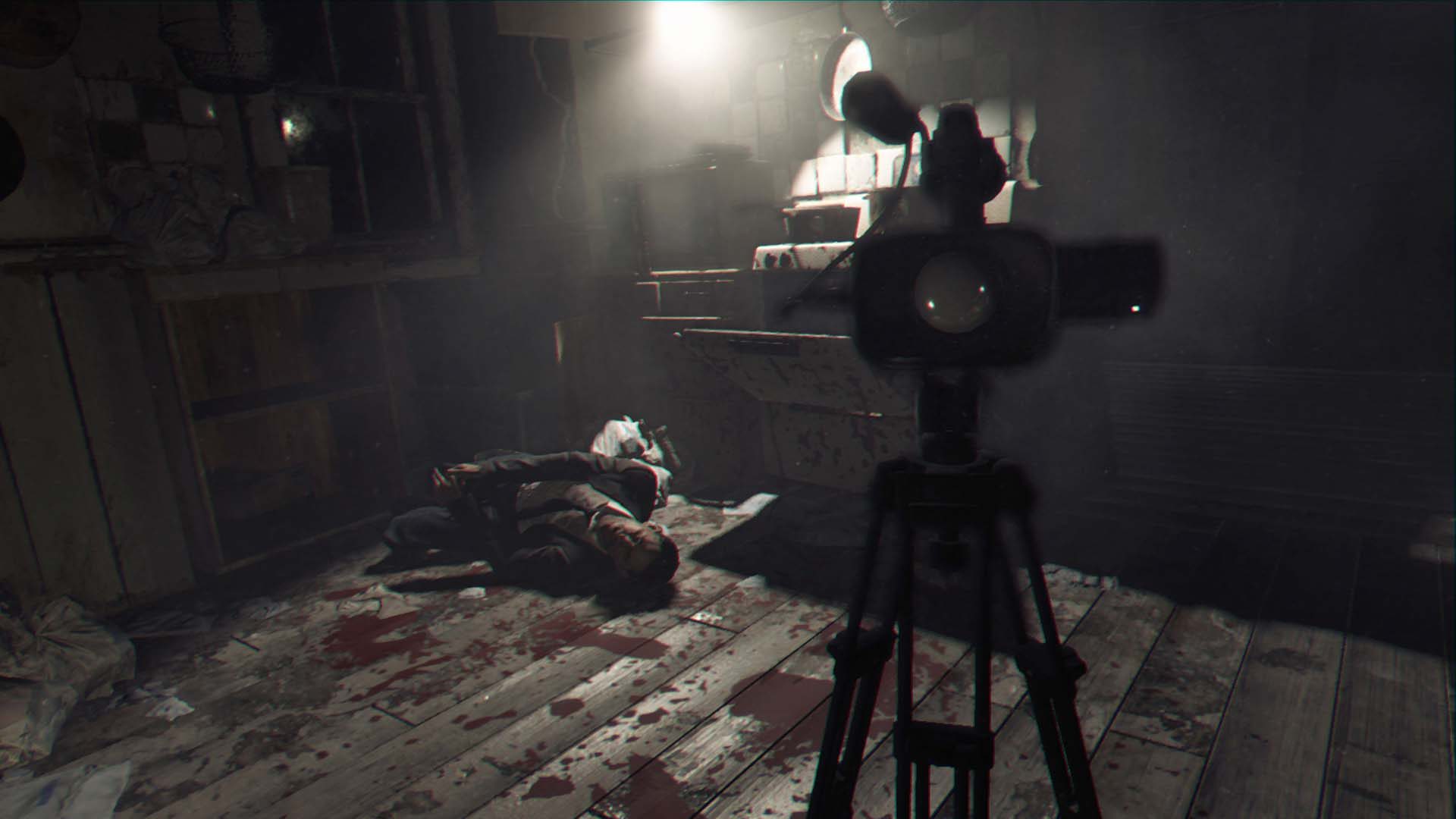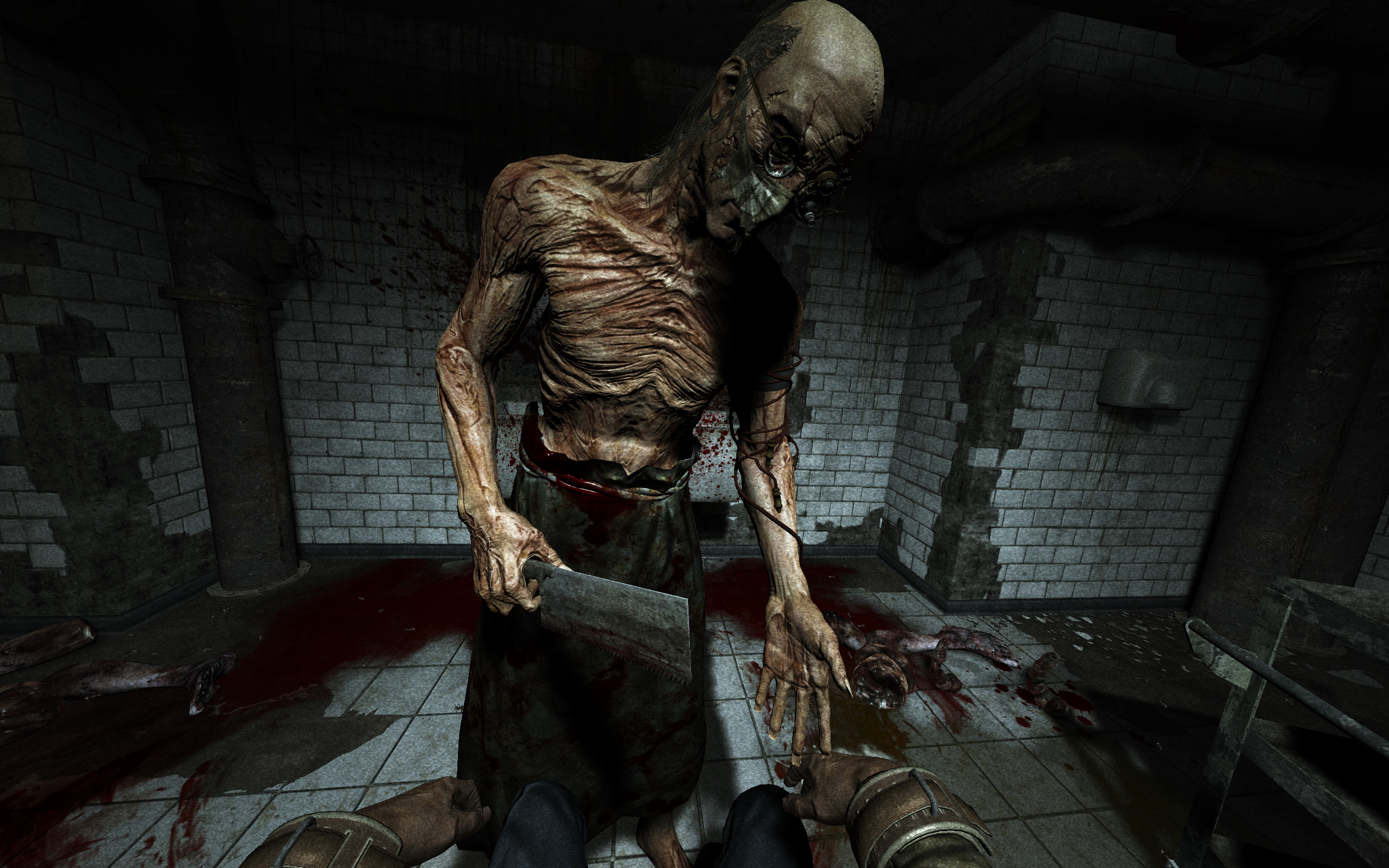After stealth: how to preserve the freshness of horror games

The success of the cult series Penumbra of the Swedish indie studio Frictional Games led to the release in 2010 of Amnesia: The Dark Descent . It became the epitome of a "sleeping" hit: obviously, the niche game won global popularity and had a strong influence on the industry. In the “horror” genre, the foundations of which were laid by Alone in the Dark and its immortal streams of Resident Evil and Silent Hill , the stealth gameplay of Amnesia without the possibility of combat was a strange exception.
Although Frictional lead designer Thomas Grip called Resident Evil his most important source of inspiration, Amnesia was, in my opinion, a clear return to the Clocktower philosophy. In it, accents have shifted from battles to escape and stealth, as in the old games of the Clocktower series. Such mechanics were practically ignored in horror, especially in the games of American AAA developers. With the help of Amnesia, Frictional reminded us that shooting an enemy is not necessarily as scary as running away from them. Thus, the authors have revived the feeling of vulnerability in survival horror games.
For Frictional, vulnerability is always associated with secrecy. The elegant mechanics of playing hide-and-seek with a monster took the genre of horror games by storm. Games like Alien Isolation , Outlast and Slender have been successful thanks to just a few variations introduced to Frictional mechanics. Even Shinji Mikami used stealth with rare fights in two excellent DLCs for Evil Within : The Assignment and The Consequence . Today, Resident Evil: Biohazard escaped onto the stage, which still has the influence of Amnesia released six years ago.
')

In general, this trend was good, it was a return to the roots of horror games. However, there is a danger that such a game formula will become the standard for some developers. Having found, so to speak, a “universal” solution, studios can replace the feeling of horror with a clichéd repetition of mechanics. Although such games with a quality approach can be amazing, progress will again be replaced by stagnation. If you continue to stamp stealth games with rare battles, you will get the impression that horror is stealth with battles.
But this should not be. The essence of horror is not just hide-and-seek from monsters in dark rooms, no matter how interesting they are. Indeed, many players were terrified of point-and-click games such as Amber: Journeys Beyond , Dark Fall: The Journal , Scratches, and Barrow Hill . To convey a sense of anxiety and horror, the authors of these games relied not only on creating a pressure atmosphere. However, even in the absence of a sense of threat, these games still caused fear.
To understand this obviously transcendental element of horror, which is not easy to attach to a particular set of mechanics, we should explore the essence of the horror itself. Adriana Cavarero in her book Horrorism: Naming Contemporary Violence conducted an etymological analysis of the word "horror" (horror, disgust), in particular, comparing it with the word "terror" (fear, nightmare), finding some interesting definition qualities.
According to Kavarero, the root of fear (terror) is survival. She writes:
Among many opportunities to experience fear, or, to be more precise, a sudden attack of fear [...], the word terror determines the type that directly affects the body, makes it tremble and causes the desire to immediately escape. [...] Acting directly on the body, he controls it, sets it in motion. In the real world, fear causes a threat to a living being who is trying to escape from it.But wait - a quick pulse, an adrenaline rush, an unconscious desire to run away - do we not associate all these sensations with modern horror games? Of course, a good horror can inspire fear, and the paradigm used by Frictional, gives priority to fear in the mechanics of the game. But for Cavarero, this is not a real horror.
Horror, according to her, is not an escape. It is rather a feeling associated with immobility and inevitability.
Cruel death is only part of the picture, and not the most central one. The question is not to avoid death. Compared to what happens in fear, there is no instinctive movement in horror or impulse in an attempt to escape. Rather, it looks like a panic-transmitted infection. [...] Overwhelmed by a sense of disgust in the face of cruelty worse than death, the body freezes in place.The incarnation of unacceptable violence causing such changes, Kavarero calls dismemberment. Cruel ugling causes horror in the body, manifested in agonizing immobility. The disfigurement of characters is literally present in horror games, but I think that this concept can be extrapolated to a metaphor. Deformity can take various forms, both physical and mental. And they both can cause immobilizing disgust.

Of course, the horror, understood in this sense, creates memorable moments in modern games. Outlast and its DLC Whistleblower immediately come to mind. Richard Trager from Outlast and Eddie Gluskin from Whistleblower become central characters in stunningly orchestrated scenes in which the player’s body is immobilized and subjected to a brutal amputation. But here the problem lies in the mechanism: the immobility is presented in the form of a roller in which the player does not participate. Simply taking control of the player and scattering guts here and there is a rather primitive approach. Paralysis can be both physical and existential. Sometimes stillness is not just an inability to move, but first and foremost a terrifying uselessness of movement. Hopelessness as a type of paralysis.
And this is the next level. Creating horror means creating existential paralysis. It is necessary to create situations that thematically or literally reproduce immobility in the form of a spasm. This means that such concepts should not be reproduced in commercials, but be fully interactive. We need to learn how to create this feeling without taking control of the player. Games are a unique interactive environment, perfectly balanced for in-depth study of mobility and managing it to create new sensations.

The first example that immediately comes to mind is the jewel of the horror genre Anatomy by independent developer Kitty Horrorshow. In many reviews, the atmosphere is called lo-fi, an excellent sound design and a whimsical plot, but only Chris Priestman in the review for Kill Screen truly identified the secret of the game design formula:
In many horror games, the character enters the room, and a monster unexpectedly jumps out of it - a cheap trick. Anatomy , before the player enters the room, whispers in his ear that there is a monster in the room, allowing it to create tension to the player’s own sensations. She repeats this technique again and again, skillfully increasing the feeling of fear and not letting the player get rid of him. It is a type of horror that penetrates deep into you and seems to be absorbed into the bones. I would compare this effect with the saw blade infinitely moving over the body.In a sense, it is not surprising that such a simple game like Anatomy so easily achieved the desired effect. Horror is a genre based on basic, primitive emotions. Only by getting rid of everything superficial will we be able to understand the hidden springs of the effectiveness of the genre. Of course, the quality of performance also contributes, but first and foremost, the foundation of the design must be strong, otherwise everything else will look artificial. Therefore, we in Freesphere think a lot about the design of horror for our current game Tether and future projects.
Source: https://habr.com/ru/post/322458/
All Articles